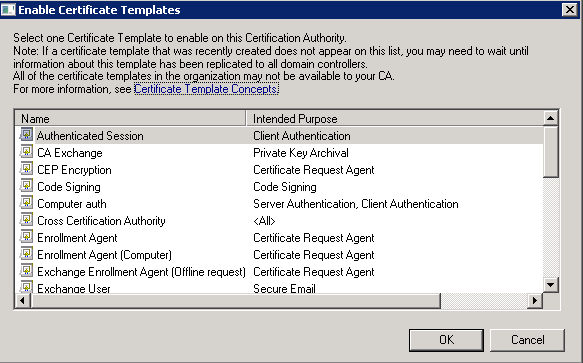Long time ago I have written about generating Certificate Signing Requests from non-Windows machines. The main goal was to sign such request by Microsoft Enterprise CA. I have mentioned vSphere infrastructure as an example.
I have been recently asked a similar question. New vSphere versions require Alternative Name Extension to exist in the certificate. The question was how to configure openssl to implement both functionalities.
Reaching the goal was quite simple, but not trivial. We can define several sections containing settings for request extensions, however only one can be used for a specific certificate request generation.
It is a good practice to reorganize an openssl configuration file designed for generating a single server certificate. In this way, we obtain templates for each server instance.
An Example configuration file may look as follows:
1 2 3 4 5 6 7 8 9 10 11 12 13 14 15 16 17 18 19 20 21 22 23 24 25 26 27 28 29 30 31 | openssl_conf = openssl_init [ openssl_init ] oid_section = new_oids [ req ] default_bits = 2048 default_keyfile = rui.key distinguished_name = req_distinguished_name encrypt_key = no prompt = no string_mask = nombstr req_extensions = v3_req [ new_oids ] MsCaCertificateTemplate = 1.3.6.1.4.1.311.20.2 [ v3_req ] basicContraints = CA:FALSE keyUsage = digitalSignature, keyEncipherment, dataEncipherment extendedKeyUsage = serverAuth, clientAuth subjectAltName = DNS:server01, DNS:server01.domena.test MsCaCertificateTemplate = ASN1:PRINTABLESTRING:VMwareCertificate [ req_distinguished_name ] countrName = PL stateOrProvinceName = Malopolskie localityName = Krakow 0.organizationName = Firma organizationalUnitName = Oddzial commonName = server01.domena.test |
Most important parts of the config file are:
- Line 1. Identifies the global configuration section.
- Line 4. Identifies the OIDs definitione section. This line is singleton in this section.
- Line 13. Identifies the Extension definition section. Those extensions will be added to certificate request body.
- Line 15. Defines OIDs section.
- Line 16. Defines OID registered and used by Microsoft for marking certificate template extension.
- Line 22. Defines alternative names of the server. Of course, we can use other than DNS prefixes.
- Line 23. Defines the name of certificate Template, what is designed to use during signing the certificate. It is important to remember that we need to specify “Certificate Template Name”, as oposite to “Certificate Template Display Name”.
Rest of the file is standard body similar to every single config file designed for generation of requests.

